Abstract
1 The dose-response curves for angiotensin, 5-hydroxytryptamine and carbachol were obtained on rat uterus and colon excised 24 h after a bilateral nephrectomy or a sham operation.
2 There was a shift to the left in the dose-response curves to angiotensin of organs from nephrectomized animals. Dose-response curves to 5-hydroxytryptamine and carbachol were not affected by nephrectomy.
3 The interaction of the two competitive antagonists (1-Asn, 5-Ileu, 8-Ala)-angiotensin II and (1-Asn, 5-Ileu, 8-Ileu)-angiotensin II with angiotensin II receptors was tested in control and nephrectomized organs. There was a decrease of the KI values in colon muscle after nephrectomy.
4 In conclusion, nephrectomy produces a specific supersensitivity to angiotensin that seems to be due to a change in the structure of angiotensin receptors, at least in colon smooth muscle. This increase in sensitivity may be the result of the elimination of a tropic factor that acts on angiotensin receptor sites.
Full text
PDF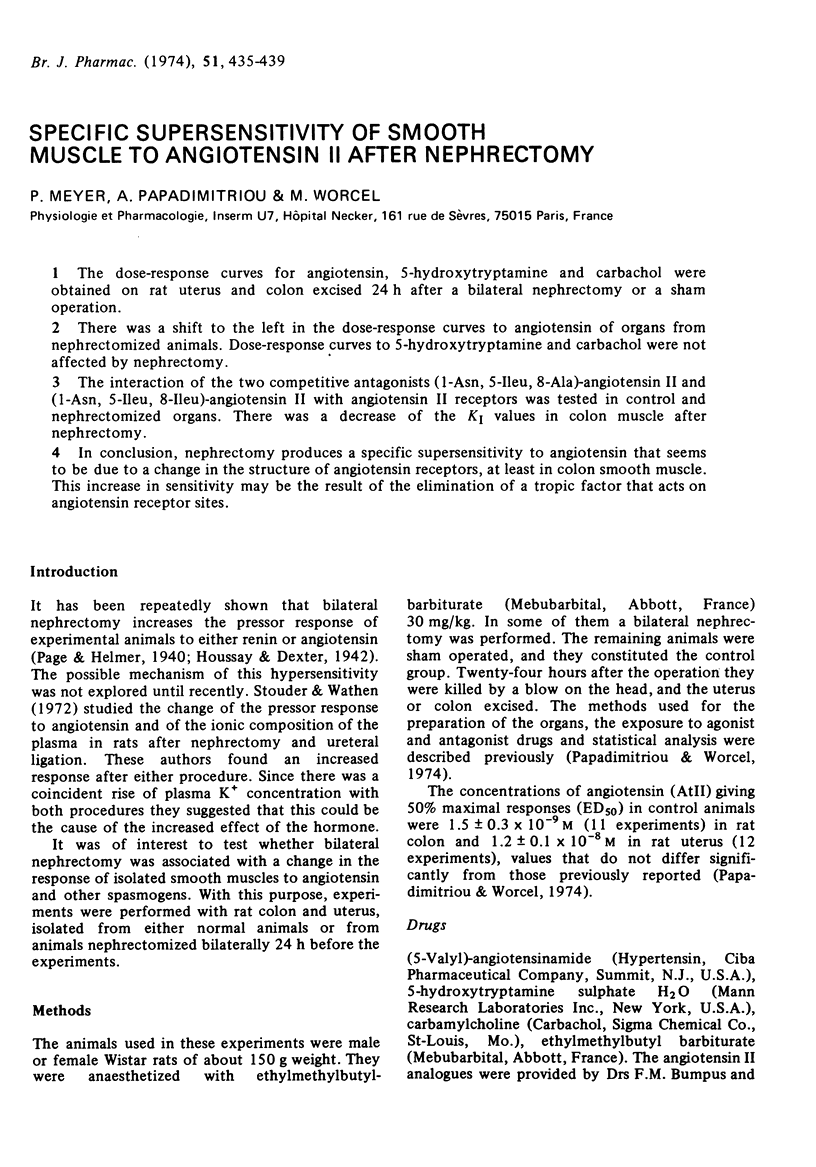
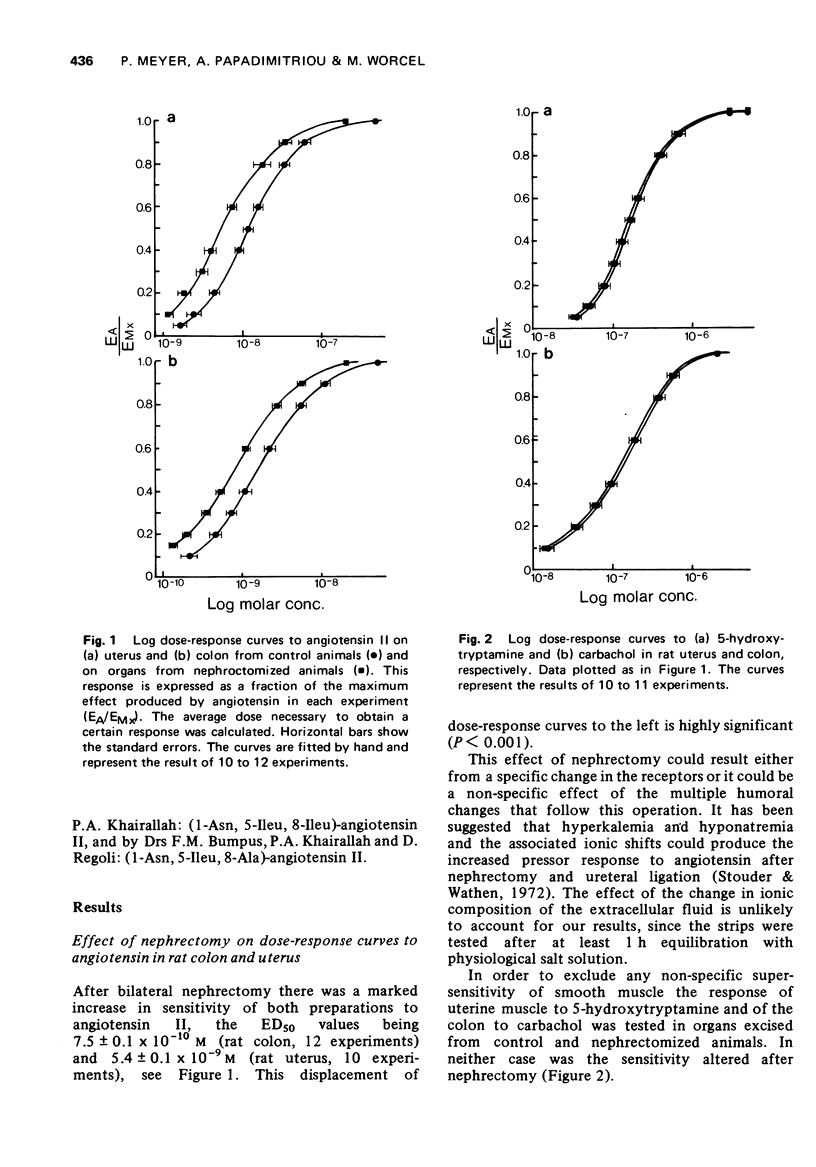
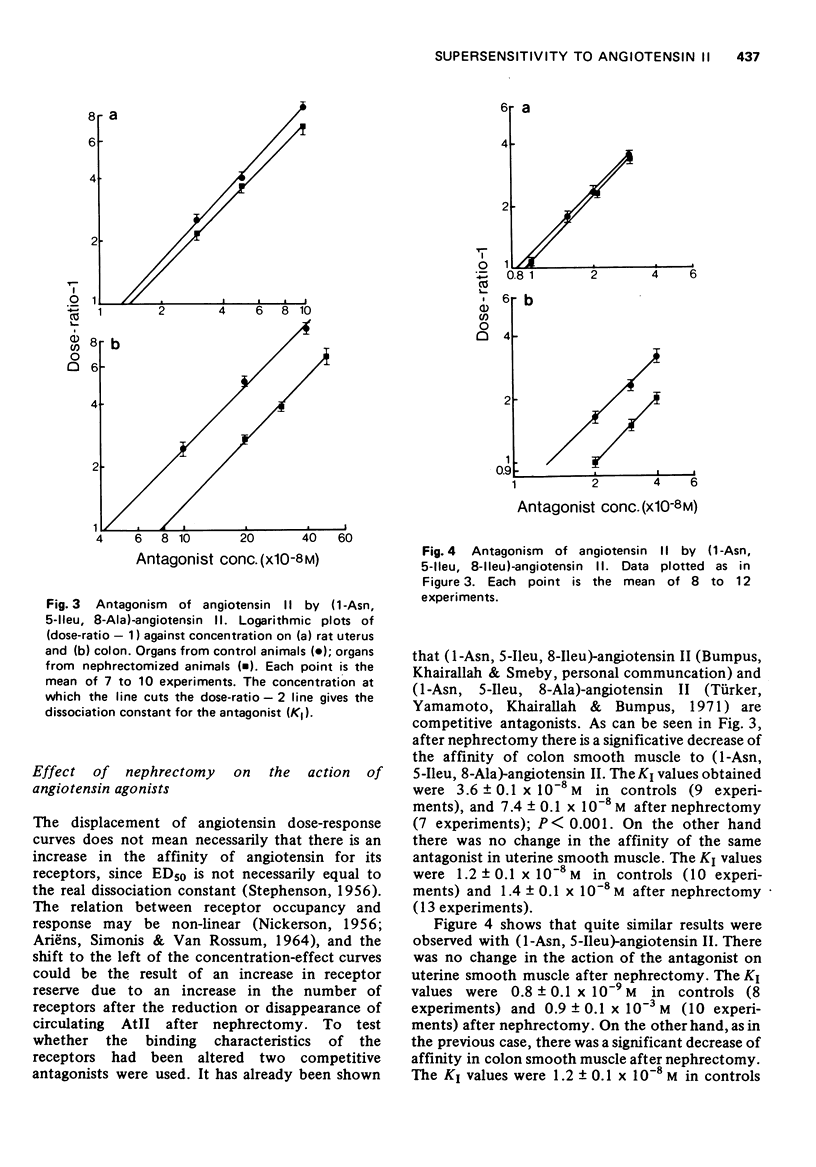
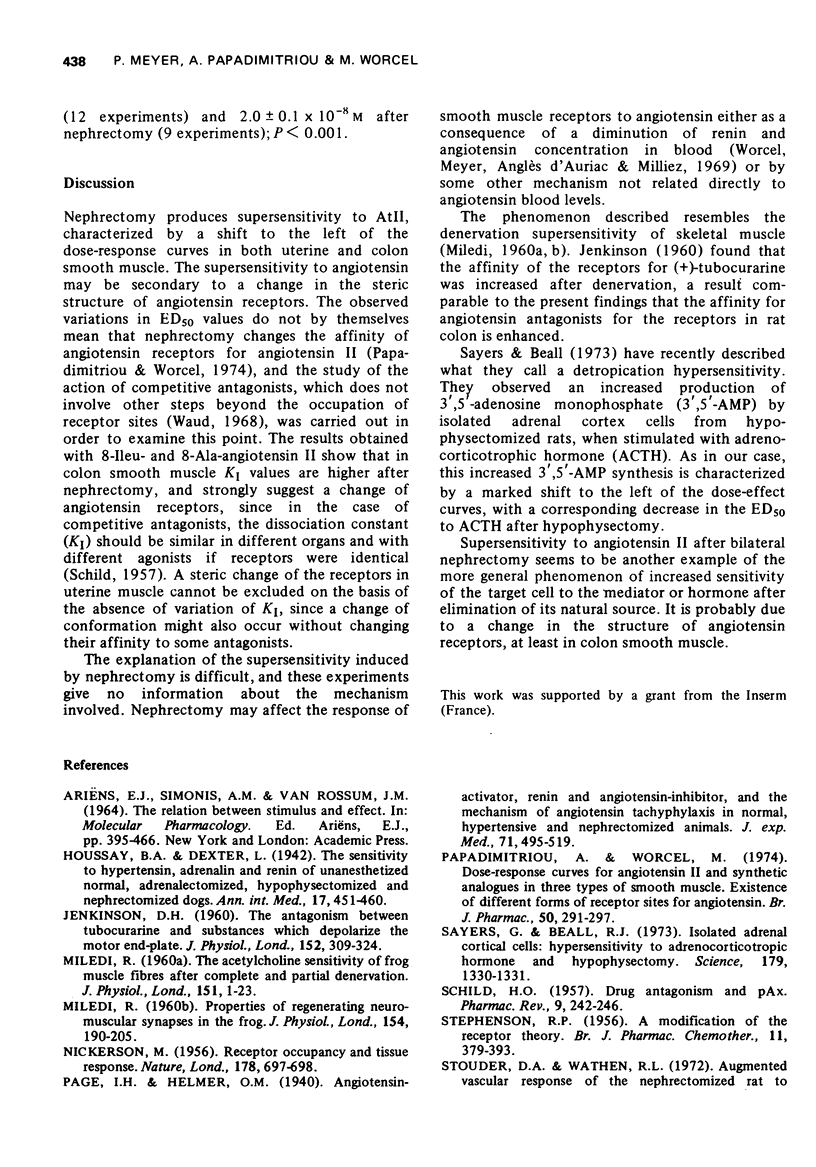
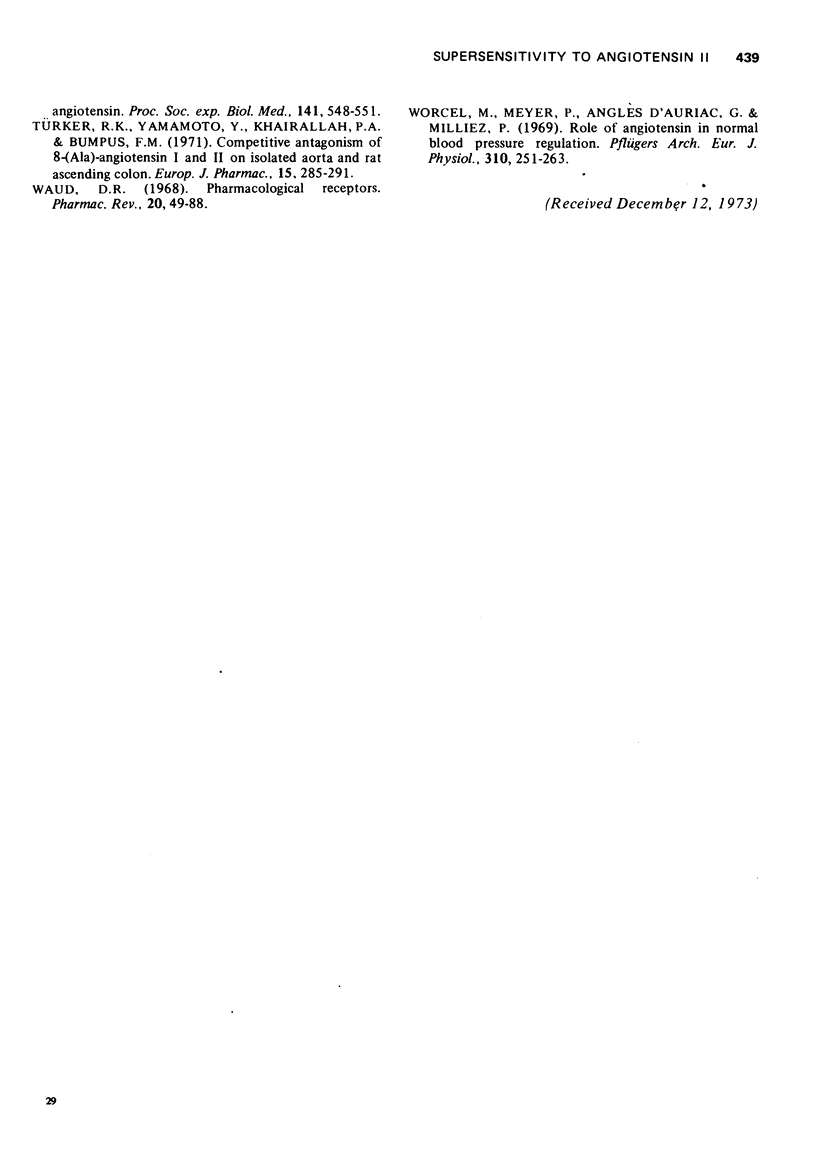
Selected References
These references are in PubMed. This may not be the complete list of references from this article.
- JENKINSON D. H. The antagonism between tubocurarine and substances which depolarize the motor end-plate. J Physiol. 1960 Jul;152:309–324. doi: 10.1113/jphysiol.1960.sp006489. [DOI] [PMC free article] [PubMed] [Google Scholar]
- MILEDI R. Properties of regenerating neuromuscular synapses in the frog. J Physiol. 1960 Nov;154:190–205. doi: 10.1113/jphysiol.1960.sp006573. [DOI] [PMC free article] [PubMed] [Google Scholar]
- MILEDI R. The acetylcholine sensitivity of frog muscle fibres after complete or partial devervation. J Physiol. 1960 Apr;151:1–23. [PMC free article] [PubMed] [Google Scholar]
- NICKERSON M. Receptor occupancy and tissue response. Nature. 1956 Sep 29;178(4535):697–698. doi: 10.1038/178697b0. [DOI] [PubMed] [Google Scholar]
- Papadimitriou A., Worcel M. Dose-response curves for angiotensin II and synthetic analogues in three types of smooth muscle: existence of different forms of receptor sites for angiotensin II. Br J Pharmacol. 1974 Feb;50(2):291–297. doi: 10.1111/j.1476-5381.1974.tb08575.x. [DOI] [PMC free article] [PubMed] [Google Scholar]
- SCHILD H. O. Drug antagonism and pAx. Pharmacol Rev. 1957 Jun;9(2):242–246. [PubMed] [Google Scholar]
- STEPHENSON R. P. A modification of receptor theory. Br J Pharmacol Chemother. 1956 Dec;11(4):379–393. doi: 10.1111/j.1476-5381.1956.tb00006.x. [DOI] [PMC free article] [PubMed] [Google Scholar]
- Sayers G., Beall R. J. Isolated adrenal cortex cells: hypersensitivity to adrenocorticotropic hormone after hypophysectomy. Science. 1973 Mar 30;179(4080):1330–1331. doi: 10.1126/science.179.4080.1330. [DOI] [PubMed] [Google Scholar]
- Turker R. K., Yamamoto M. Y., Khairallah P. A., Bumpus F. M. Competative antagonism of 8-ala-angiotensin II to angiotensins I and II on isolated rabbit aorta and rat colon. Eur J Pharmacol. 1971;15(3):285–291. doi: 10.1016/0014-2999(71)90094-x. [DOI] [PubMed] [Google Scholar]
- Worcel M., Meyer P., D'Auriac G. A., Milliez P. Role of angiotensin in normal blood pressure regulation. Pflugers Arch. 1969;310(3):251–263. doi: 10.1007/BF00587213. [DOI] [PubMed] [Google Scholar]


